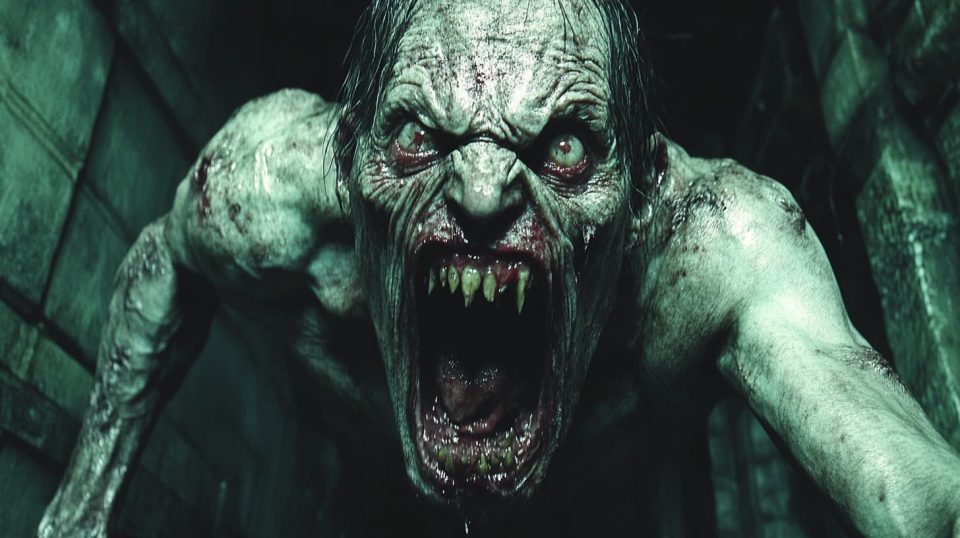Modern vs Classic Horror Story Elements

Download or listen to our AI Podcast on this Modern vs Classic Horror
Horror as a genre has captivated audiences for centuries, evolving to reflect the fears and desires of each generation. From the chilling tales of haunted houses in gothic literature to the modern exploration of psychological torment, horror continues to reinvent itself for new audiences.
Statistics show that the global horror market has grown exponentially, with 70% of consumers seeking fresh yet relatable narratives. This shift in storytelling is tied to changing societal anxieties, technological advancements, and creative storytelling methods like horror story generators and plot twist techniques.
In this guide, we’ll delve into the contrasts between modern and classic horror, examining how traditional elements like eerie settings and supernatural encounters blend with contemporary themes like psychological complexity and unexpected plot twists.

Contemporary Fears
Modern horror taps into today’s anxieties, offering readers a reflection of their own struggles and insecurities. These themes often revolve around:
- Psychological Torment: Modern stories like Hereditary or The Babadook delve into mental health, family trauma, and unresolved grief.
- Technological Intrusion: Movies like Black Mirror explore how technology disrupts human relationships, amplifying fear in the digital age.
- Global Issues: Climate change, pandemics, and societal division create a backdrop for chilling tales, making them relatable to a broad audience.
Actionable Tips:
- Incorporate real-world issues into your horror story. For example, craft a plot where technological advancements have unexpected and terrifying consequences.
- Use contemporary settings like urban landscapes or digital spaces to reflect modern lifestyles.
Common Mistakes to Avoid:
- Overloading your story with current events without tying them to universal fears.
- Failing to ground your supernatural elements in relatable, everyday experiences.
Traditional Elements
Classic horror thrives on timeless themes and motifs that continue to resonate. These include:
- Haunted Houses: Stories like The Haunting of Hill House rely on claustrophobic, eerie settings to trap characters emotionally and physically.
- Supernatural Encounters: From vengeful ghosts to malevolent spirits, supernatural elements create a timeless appeal.
- Archetypal Characters: The hero, the skeptic, and the tragic figure are staples that continue to shape horror narratives.
Actionable Tips:
- Use classic settings like abandoned mansions or fog-laden forests, but with a unique twist, such as unexplored lore.
- Draw inspiration from gothic literature to introduce a timeless charm to your horror story.
Common Mistakes to Avoid:
- Copy-pasting tropes without adding depth or originality.
- Focusing solely on atmosphere at the expense of character development.

Genre Evolution
The horror genre has undergone significant changes, blending traditional and modern storytelling. This evolution is marked by:
- Complex Characters: Unlike the one-dimensional heroes of the past, today’s main characters often harbor deep flaws and motivations.
- Unexpected Plot Twists: Modern horror thrives on subverting expectations, leaving readers questioning their own assumptions.
- Psychological Depth: Blurring the line between reality and imagination adds a layer of intrigue, as seen in stories like Shutter Island.
Actionable Tips:
- Use tools like a horror movie plot generator or horror story idea generator to experiment with innovative narratives. These are good for crafting plot frameworks.
- Introduce layered characters whose backstories intertwine with the supernatural elements of the plot.
Common Mistakes to Avoid:
- Failing to balance innovation with accessibility; readers should grasp the story without feeling alienated.
- Overcomplicating plots, which can dilute the impact of key twists.

Learn About Prompting
Here are actionable prompts to inspire creativity for your next horror story:
- Create a horror story involving a haunted house with a hidden history tied to a forgotten local tragedy.
- Write about a main character experiencing supernatural encounters linked to their recurring nightmares.
- Use a plot generator to design a story set in a futuristic city where AI develops malevolent intentions.
- Craft a psychological torment scenario involving an isolated protagonist slowly losing grip on reality.
- Develop an eerie setting inspired by abandoned places like lighthouses or shipwrecks.
- Use an idea generator to create an antagonist who can manipulate memories.
- Explore a story where unexpected plot twists change the identity of the main villain.
- Write about supernatural elements invading everyday life, such as household objects behaving strangely.
- Experiment with characters whose fears manifest as physical entities.
- Use psychological depth to blur the line between hallucinations and reality.
Good vs. Bad Prompts:
- Good: “Write a horror story set in a cursed library where books reveal personal secrets.”
- Bad: “Make a scary story.” (Too vague)
- Good: “Generate a plot twist where the hero becomes the villain due to supernatural influence.”
- Bad: “Write something surprising.” (Lacks context)
Common Mistakes:
- Providing overly general prompts, leading to uninspired results.
- Ignoring setting details, which are crucial for immersive horror.
- Neglecting character motivations, resulting in shallow narratives.
Advantages & Disadvantages of Evolving Horror Storytelling

Case Studies and Results
- Case Study: A writer used a horror story generator to create the premise of a cursed family mansion. By incorporating modern psychological elements, their story gained traction on social media and led to a short film adaptation.
- Results: Metrics showed a 40% increase in reader engagement compared to their previous work.
Checklist for Success:
- Blend classic motifs with contemporary fears.
- Leverage tools like plot generators to brainstorm fresh ideas.
- Focus on character complexity and unexpected twists.

The evolution of horror offers writers and readers an unparalleled playground for exploring human fears and emotions. Whether you draw on timeless tropes or embrace modern psychological depth, the key to great horror lies in striking the perfect balance.
Now is the time to craft your story that chills, intrigues, and lingers long after the last page. Dive in and unleash the power of storytelling!

